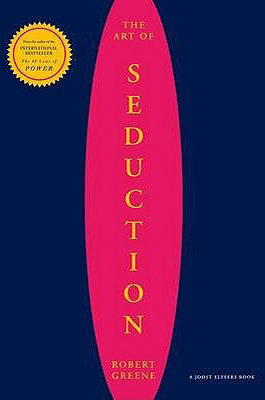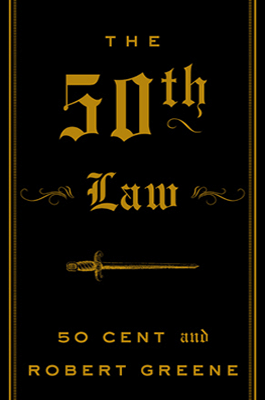Thoughts on Seduction
Sorry for the hiatus here. I have been working rather hard the past week on the proposal for my next book project. It all should be finalized within a month and you will be the first people to be informed as to its content. I am aiming for a grand slam, trying to also sell books number 4, 5 and 6 in one fell swoop. All part of a grand strategic scheme. I will continue the Schopenhauer idea later this week. As well as sift through the tea leaves of the impending election.
But the thought of the day has to do with the genesis of the Art of Seduction. There were really two inspirations for that book: one was a discovery I believe I can take credit for (at least since no one knows about this discovery) as to the origins of all seductions. What ties them all together, or rather what lies beneath this peculiar glitch in human psychology that allows us to be seduced–by a person, a work of art, a thought, an advertisement, on and on. This came from a reading of Malinowski’s book on incest among the Trobriander Islanders (Sex and Repression in Savage Society), really a few paragraphs that sparked a thought. I will share this thought at a later date.
The other inspiration was myself, my own weaknesses when it comes to seduction. Now, I would classify myself as a classical Rake. I don’t need to explain that to you, because I assume you have read the book and the chapter on Rakes is one of the most important. The most common misconception about rakes is that they are cold creatures, who use and discard women at a fantastic rate.
In fact, rakes are very emotional, and they are prone to fall deeply in love with a woman. The problem is that in the course of their lives they will fall in love with hundreds, or in the case of Errol Flynn, thousands of women. This can last for a few days, months, or even years. But they fall quickly out of love, as the enchantment wears off and the next prey appears on the horizon.
Now, most rakes can have a strong effect on certain women. That is because when they fall in love, for that short period, they give themselves over to the woman in a complete manner, one that is rare for a man. This is devastatingly seductive. It also shows the weakness such a man has for a woman. Look at Bill Clinton, a classic rake if ever there was one. Women are the first to forgive the foibles of a Clinton, because they understand deep down inside that he is weak, and his weakness is women. And this is charming.
From the outside, what most people see is the string of victims who have been seduced and from that they deduce an inner coldness on the part of the rake. But in thinking deeply about a Casanova, a Lord Byron, a Duke Ellington, or about myself (not that I put myself in their category), I know this is not at all the case. A Rake is a machine for falling in love.
It is Stendhal who best described the falling in love process in his book On Love. He compared it to the crystallization of tree limbs that are left in a salt mine. When you fall in love, you idealize the man or woman involved. You create an image of them in your mind that is enchanted and full of fantasy. The tree limb is a plain object, but after it has been left in the mine, it emerges with brilliant crystals. That is the mental process when we fall in love.
And a man who has been through this time and again and again and again with many women, comes to see it all very clearly. He has a clear memory, the day or week after the spell is broken, of how he has idealized the woman in question, created something in his mind that in the end is not the reality.
And so, I saw seduction as something that can also be quite conscious–seducers being people who are adept at inviting people’s fantasies, making others idealize them in some way, causing them to be enchanted and fall in love. Sometimes, a man or woman can be completely calculating in this manner, becoming a kind of machine for causing the crystallization. Coquettes are particularly good at this (at least with me).
But the game goes on, on all levels. We are constantly doing this to others around us, trying to draw them in, trying to enchant or seduce them. Most of the time it is unconscious. People who rant against my book are often the ones who try the hardest to draw others into their web, but they cannot reconcile this with their own lofty self image, and so they do what all people do in denial–they point fingers at others.
And so, I simply wanted to make the process more conscious to everyone. A process I saw myself being the victim of on many occasions.
I know my book has been used by pickup artists, and this does not bother me. But the spirit of the book is quite different from that world. When I hear of the gimmicks that pickup artists use, I see them as kind of seductive abortions, half-efforts designed to get a quick hook in the target, get the sex and then move on. It seems sad and mechanical, to me. A deep seduction, in which emotions are engaged on a strong level, and minds are penetrated, that is what excites me. The enchantment and fantasy element that is in any kind of book or movie or good seduction. Without enchantment and fantasy, the world can be quite depressing.
What makes me talk about this now was that it all had come back to me the other day, as I was in the shower the other day. Still half asleep, it suddenly struck me how many times in the past I had fallen for this or that woman, of all different types, and how far I had gone in idealizing them. It made me seem rather pathetic, someone with a bad habit. Then I remembered, while still in the shower, that that had been the spark for The Art of Seduction so long ago, and I wanted to get it down before it disappeared. There it is.
I think I will do some more seduction musing in the weeks to come, as the book is lately on my mind a lot.
Anyway, thanks for sticking around during this hiatus and I hope it won’t happen again.







